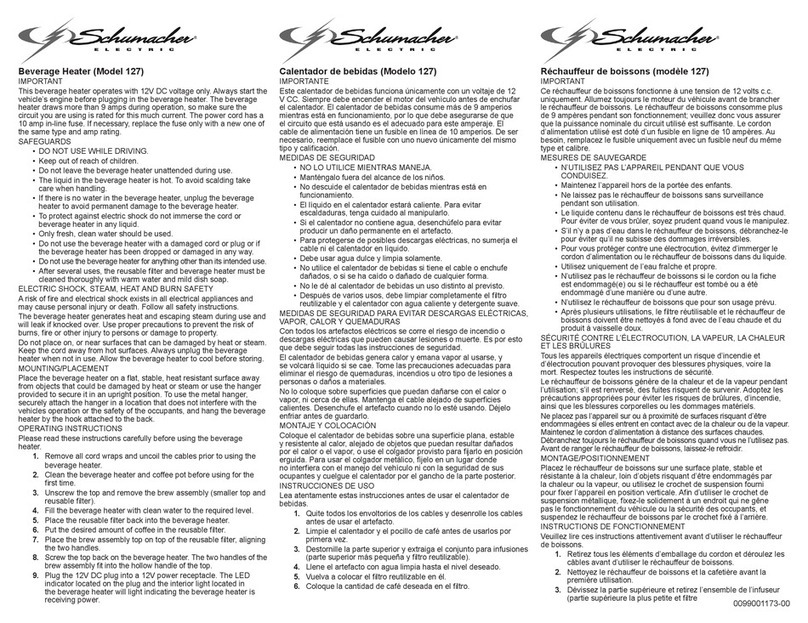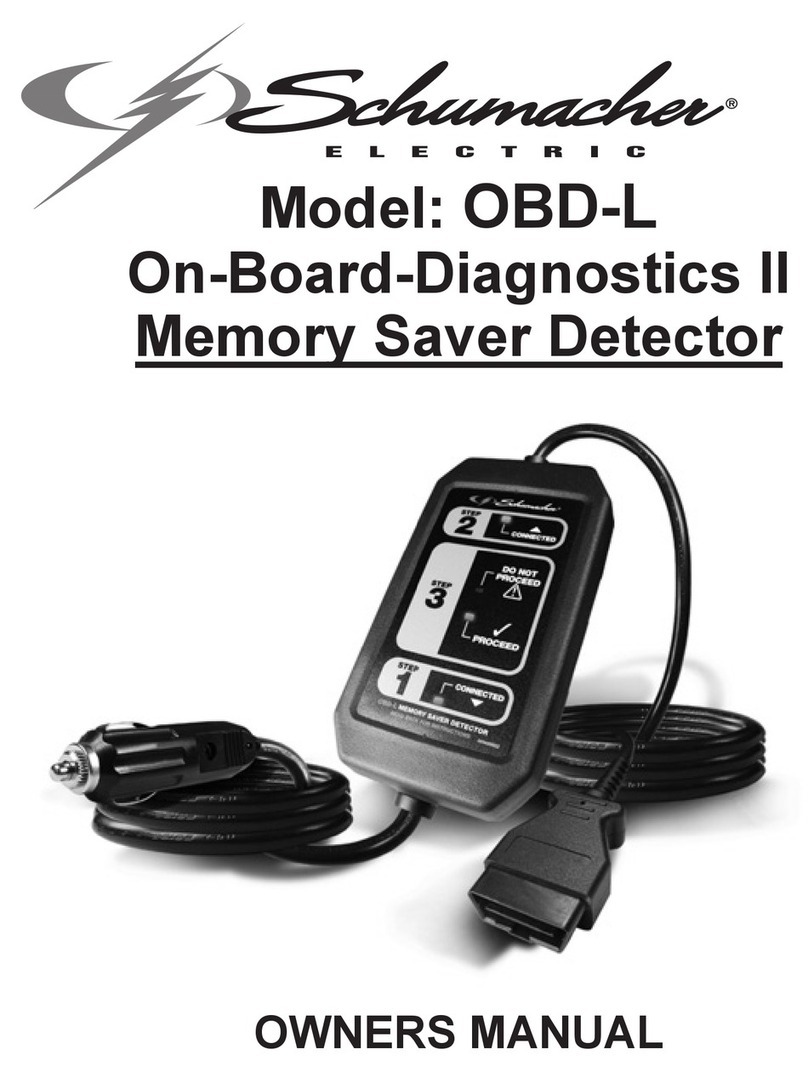• 5 •
3. The CHARGING (red) LED will light, indicating charging.
4. The CHARGED (green) LED will light when the battery has reached full charge.
This could take up to 72 hours, depending on the age and condition of the battery.
The charger will automatically go into maintain mode and maintain the battery at full
charge without damaging it.
5. Charge the memory saver as soon as possible after each use.
6.6 You may also charge the internal battery while driving, using a male-to-male
charger cable (p/n 94500109 – not included). NOTE: Use a male-to-male adaptor only
for charging the internal battery. You must use the OBD Connector to save memory.
IMPORTANT: DO NOT CHARGE INTERNAL BATTERY FOR MORE THAN 30
MINUTES OR LEAVE THE BATTERY UNATTENDED. IT COULD EXPLODE, CAUSING
PROPERTY DAMAGE OR PERSONAL INJURY.
1. Make sure the car is running.
2. Insert one end of the accessory cable into the 12V DC power outlet.
3. Insert the other end of the accessory cable into the vehicle’s accessory outlet
(lighter socket). NOTE: The CHARGING (red) LED and the CHARGED (green) LED
do not operate during this method of charging. Using this method to charge the
battery overrides the maintain mode and the battery can be overcharged.
4. Monitor the progress of the charge by pressing the Battery Status button on the front
of the unit. When it reaches a full (100%) charge, disconnect the accessory cable
from the memory saver, then from the lighter socket of the vehicle.
NOTE: Completely disconnect the charger cable when the engine is not running.
7. USING THE MEMORY SAVER
Use the memory saver to save the vehicle’s on-board diagnostic computer settings
(radio programs, diagnostic codes, etc.) while the battery is disconnected from the
vehicle during repair or maintenance.
Some vehicle manufacturers do not allow the use of a memory saver
through the OBDII. Consult the vehicle manufacturer before use, to
determine if a Memory Saver is acceptable for use on the vehicle.
7.1 Make sure that the memory saver’s internal battery is fully charged. See LED
INDICATORS section (6.4).
7.2 Turn off the vehicle and make sure all accessories are off.
7.3 Wait at least 30 minutes before using the memory saver. This ensures that the
accessories are no longer drawing current from the car battery.
7.4 Connect the memory saver’s OBD connector to the vehicle’s OBD plug. Make sure the
connector is fully engaged.
7.5 Disconnect the vehicle’s battery cables and cover the positive and negative cables with
an insulator, such as electrical tape. This prevents the connectors from touching metal,
each other, or the chassis and causing a short circuit, due to the vehicle’s electrical
system receiving power from the memory saver through the OBD connection.
When working with the vehicle’s battery, review all of the battery
manufacturer’s safety instructions, warnings and directives regarding
battery disconnection, removal and replacement.
7.6 Remove the old battery and put the new battery into position.
7.7 Remove the insulator from the positive cable and connect it to the positive terminal of
the new battery.
7.8 Remove the insulator from the negative cable and connect it to the negative terminal of
the new battery.
7.9 Once the new battery is connected, unplug the memory saver’s OBD connector from the
vehicle’s OBD plug.
Charge the memory saver as soon as possible after use.




























